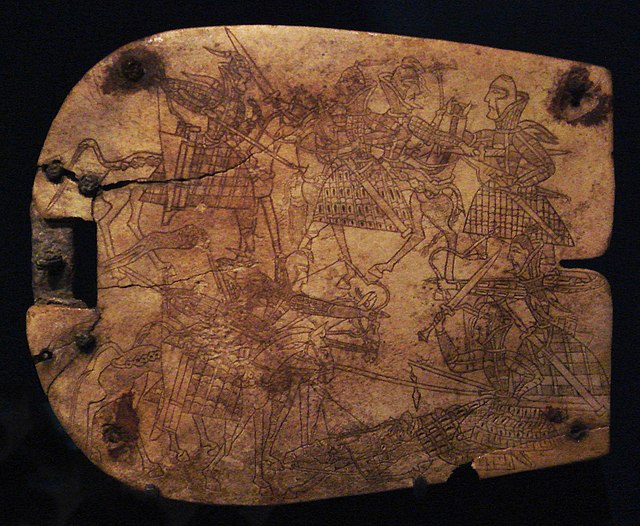A cataphract was a form of armored heavy cavalry that originated in Persia and was fielded in ancient warfare throughout Eurasia and Northern Africa.
Historical reenactment of a Sasanian-era cataphract, complete with a full set of scale armor for the horse. The rider is covered by extensive mail armour.
Close combat between soldiers in cataphract. Orlat plaques, 1st century BCE.
Saka/Kangju cataphract armour with neck-guard. 1st century BCE. Khalchayan. Museum of Arts of Uzbekistan, nb 40.
Sculpture of a Sasanian cataphract in Taq-e Bostan, Iran, 4th century CE.
Heavy cavalry was a class of cavalry intended to deliver a battlefield charge and also to act as a tactical reserve; they are also often termed shock cavalry. Although their equipment differed greatly depending on the region and historical period, heavy cavalry were generally mounted on large powerful warhorses, wore body armor, and armed with either lances, swords, maces, flails (disputed), battle axes, or war hammers; their mounts may also have been protected by barding. They were distinct from light cavalry, who were intended for raiding, reconnaissance, screening, skirmishing, patrolling, and tactical communications.
Ottoman Sipahi heavy cavalry, c. 1550
Early 16th-century French gendarmes, with complete plate armour and heavy lances
Spanish Heavy Cavalry – Royal Armoury of Madrid, Spain
The oldest known relief of a heavily armoured cavalryman, from the Sasanian Empire, at Taq-i Bostan, near Kermanshah, Iran (4th century)








